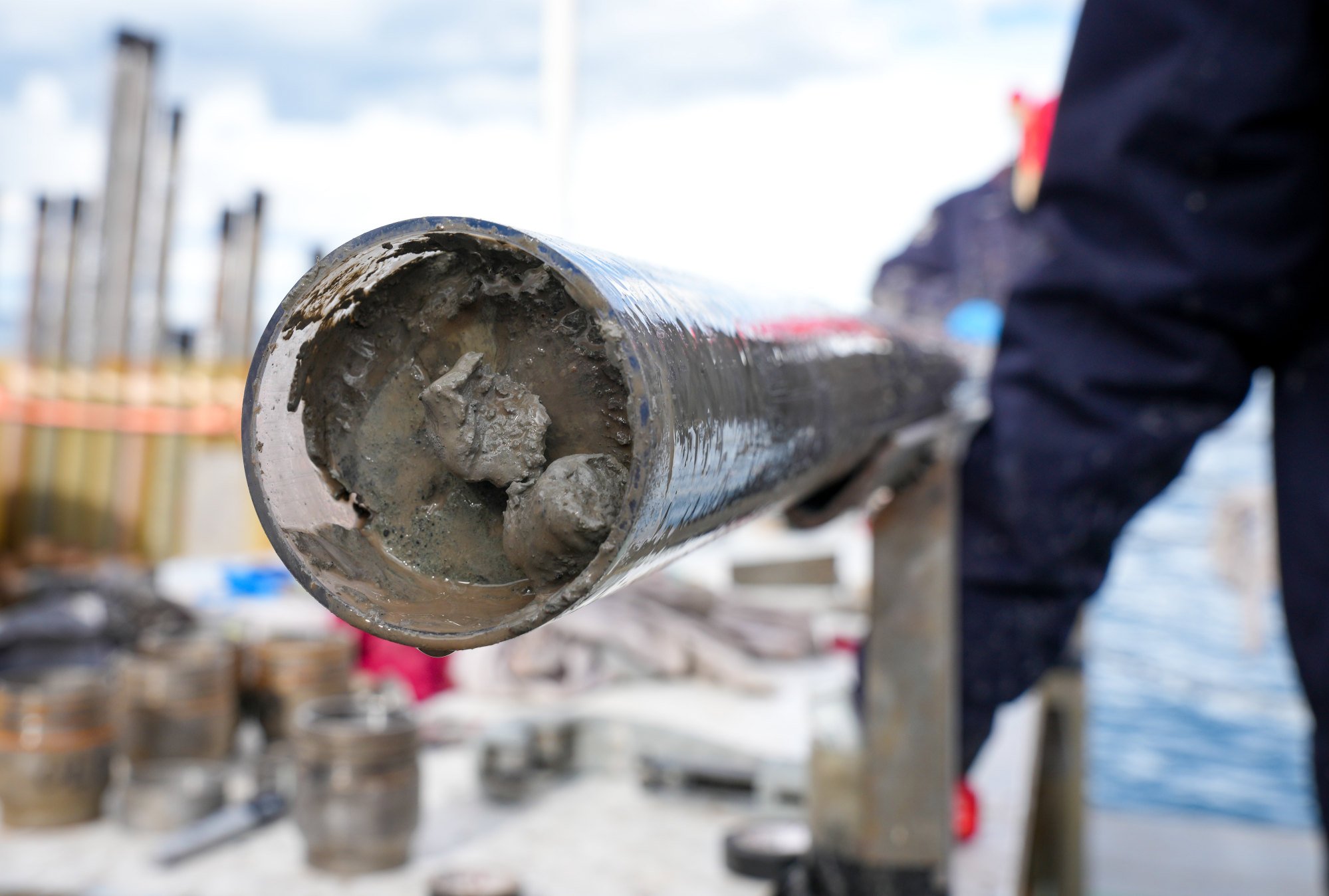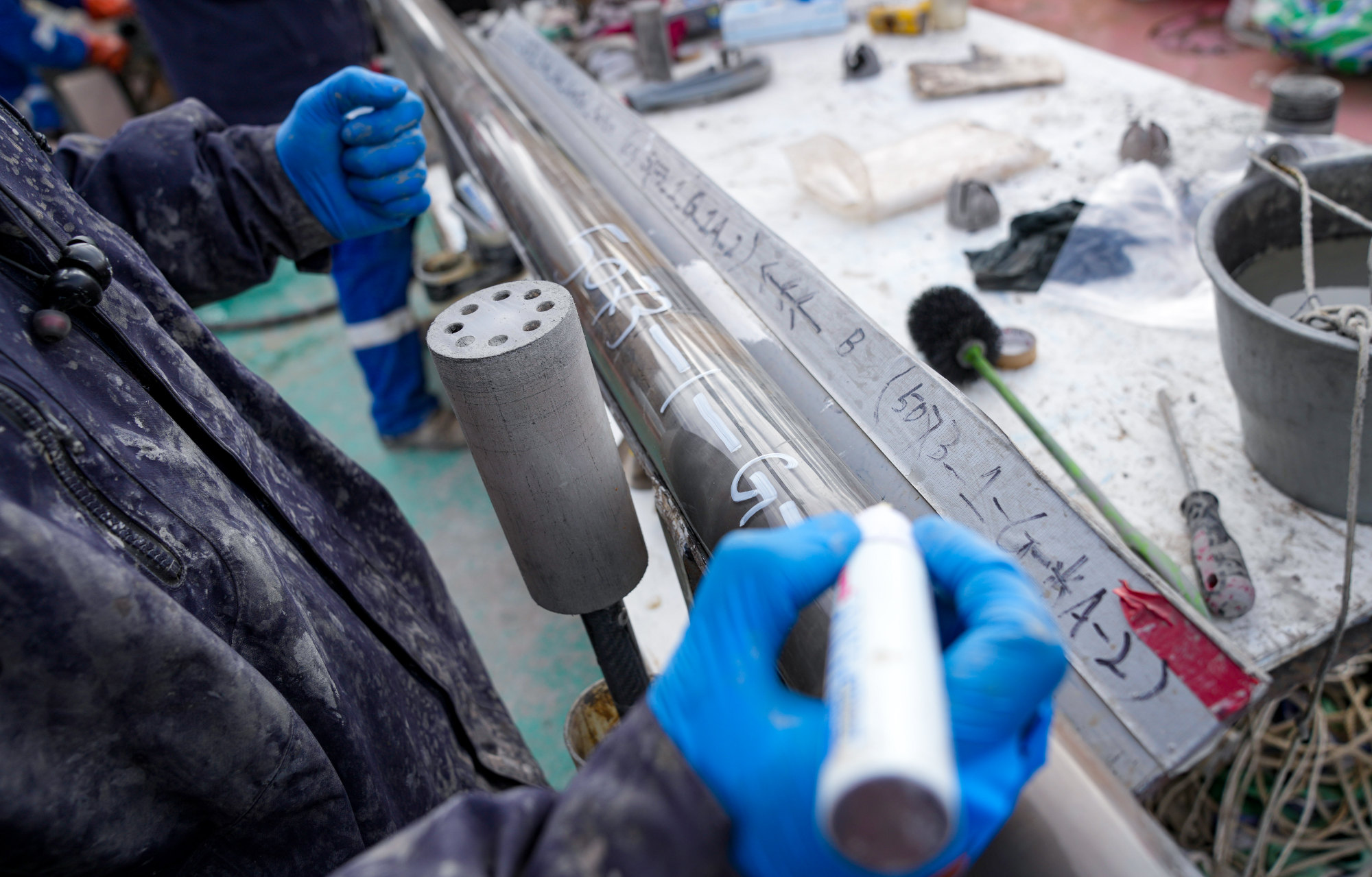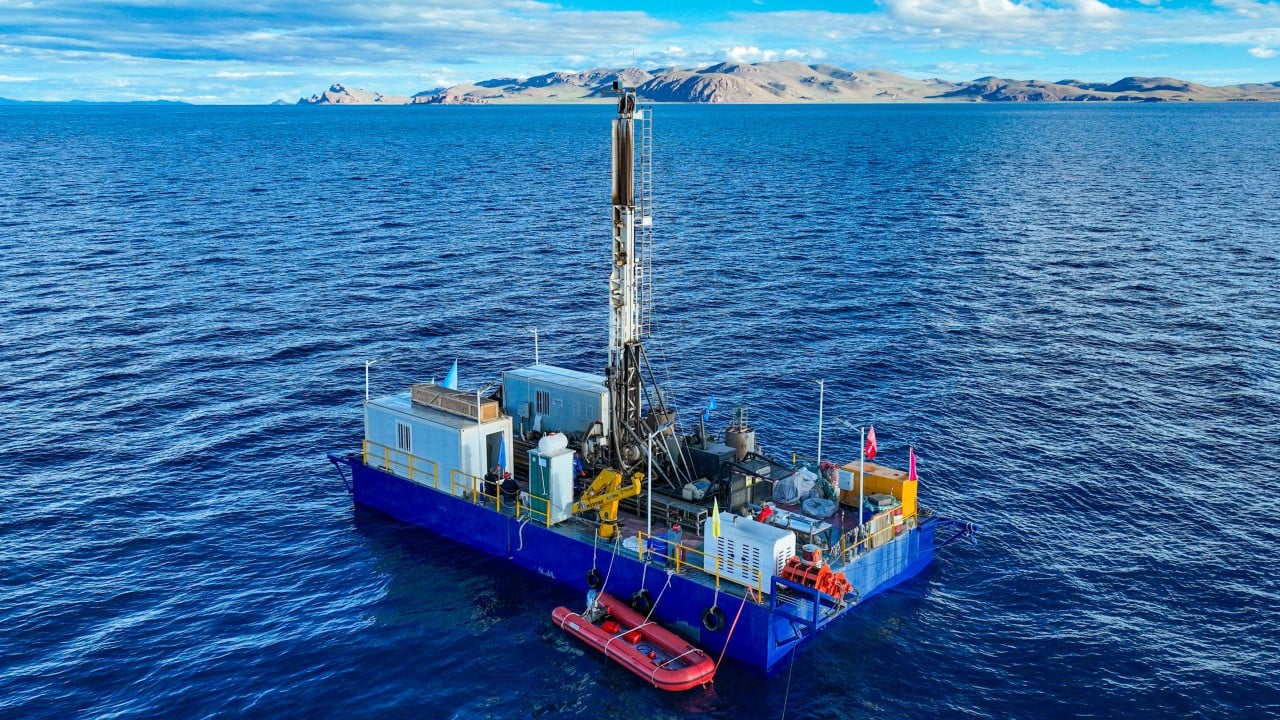A Chinese-led international climate research team has drilled its way into the record books after digging deep into the past of one of the largest and deepest lakes on the Tibetan Plateau.
The team drilled to a depth of 510.2 metres (1,674 feet), well past the previous record of 153.4 metres for the deepest lake drilling in China, state broadcaster CCTV reported on Wednesday.
Over 42 days, the team drilled seven holes at Nam Co, or “Heavenly Lake”, which sits 4,700 metres above sea level, and extracted more than 951 metres of core samples from the bottom of the lake.

Researchers hope Nam Co’s sediment, which is more than 700 metres thick, will shed new light on climate change and the geological evolution of the plateau.
The project “will provide new scientific evidence for the study of climate and environmental changes on the Tibetan Plateau over the past million years”, the report said.
The Nam Co drilling project, which is being conducted through the International Continental Scientific Drilling Programme (ICDP), was carried out at the highest ever altitude for such an endeavour.

The expedition team comprises 70 scientists and drilling technicians from the Institute of Tibetan Plateau Research and the Chinese Academy of Sciences, as well as researchers from Germany, Switzerland, the United Kingdom and other countries.
The core samples, which consist mostly of lake sediment, are like time capsules that contain a wealth of information about climate and environmental changes over aeons, including clues about the kinds of life forms that existed long ago.
Nam Co, which is about 70km (43.5 miles) long and 30km wide and is about 100km north of the regional capital of Lhasa, has no natural drainage, meaning vast amounts of sediment have accumulated on the lake bottom over time.

“The lake is a closed lake and located at the lowest point in the entire basin and thus provides precious information on rocks, soil, vegetation, rivers and human activities,” Wang Junbo, director of the scientific expedition team and a researcher at the Institute of Tibetan Plateau Research, told state news agency Xinhua.
The core samples could be used to study the ancient climate, ecology and lake evolution of the Qinghai-Tibet Plateau, Wang said.

According to ICDP’s website, about one-third of the world’s population depends on the water supply from the Tibetan Plateau, and future climate change in the region will have a major societal impact.
Core samples from the lake will help researchers identify the “timing, duration and intensity of past climatic variability and environmental impact”, and help scientists “define parameters for future climate change scenarios and their consequences for ecosystems”, the website said.


